This ultimate guide to email marketing will help you generate traffic and revenue on demand by sending emails.

If you want to
- build a list of email subscribers
- write high-converting emails
- create marketing automation sequences
- learn strategies to improve deliverability & conversions
- use the right email tools to maximize your profits
Then you will love this ultimate email marketing guide.
Let us dive in.
Email Marketing Fundamentals
First, we will look at the basics of email marketing. We will cover what email marketing is, how it works and why it is important to build an email list. After that, we will see how to use email marketing to grow your business.
What is Email Marketing?
Email marketing is the process of sending emails with promotional content to people who have subscribed to receive them. Email lets you build and nurture a relationship with your subscribers. It increases the likelihood of them making a purchase. After purchase, it helps keep the relationship warm to upsell other products in the future.
How does email marketing work?
An effective email marketing system has the following parts.
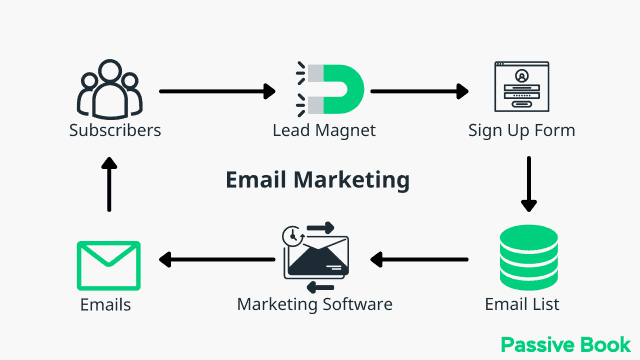
Traffic or Potential Subscribers
The first thing you need is the traffic which you can convert to subscribers. The organic ways to get traffic are through blogging, SEO, and YouTube. You can also get paid traffic through advertising.
Lead Magnet
Before you start collecting emails, you need to create lead magnets. A lead magnet is a free item that is given away in exchange for the visitor’s emails. Lead magnets can be anything from e-books, cheat sheets, quizzes, templates, trial subscriptions, samples, white papers, or free consultations.
Opt-in Form or Squeeze Page
You collect emails using signup forms or opt-in forms. An opt-in form is a form that your visitors must fill out before receiving the lead magnet. It is called an opt-in form because they opt-in to receive emails from you. You can embed this form in your blog posts, the home page, or the about page. If you embed this signup form in a dedicated page to collect emails, it is called a squeeze page.
Email List
When someone provides their email through an opt-in form they get added to your email list. An email list is a database of email subscribers who have filled out an opt-in form and agreed to receive emails from you.
Email Marketing Software (EMS)
Email marketing software helps segment subscribers, manage email lists and automate the distribution of emails. They are also known as Email Marketing Platforms (EMP) or Email Service Providers (ESP). A good EMS will also integrate with all the other software you use in your business.
Marketing Emails
Once an email subscriber enters a drip sequence, your email marketing software (EMS) starts automatically sending them emails. If you constantly keep sending them commercial emails, they are going to quickly unsubscribe. So it is important to offer value before asking them to spend money with you.
Benefits of Email Marketing
You need to understand why email marketing is important if you are going to invest your time and effort in it.
Email Converts Better: The conversion rate of email is 40x higher than Facebook & Twitter. This is because you can nurture your relationship with your subscribers before asking them to spend money. So building an email list will help you achieve your marketing goals.

Permission-Based Marketing: Email marketing is the only digital marketing channel where the subscriber permits you to market to them. According to a study, 84% of consumers prefer to receive marketing messages through email instead of seeing ads through Facebook, TV, and other advertising channels.
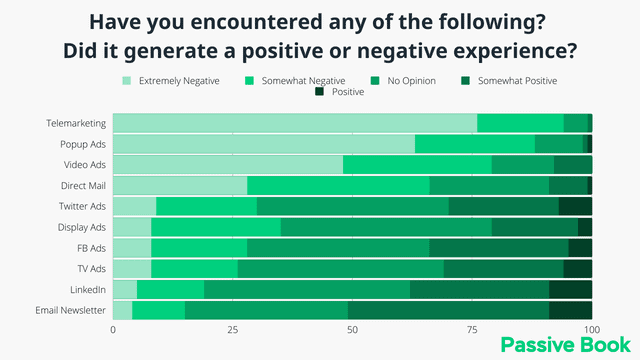
Traffic You Own: You own and control the traffic. Apart from email spam regulations, no outside entity can control when and why you contact your subscribers.
Everyone Has Email: Many social media networks have come and gone, but email has been around since the early days of the internet. There are 4.6 billion internet users out of which 4.1 billion users use email.
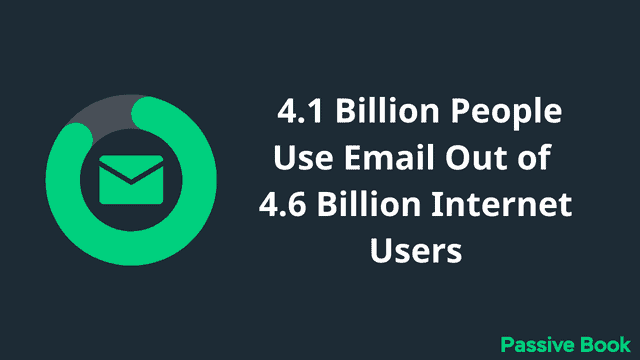
Easy to Measure & Scale: It is extremely easy to measure the impact of your email marketing, and it is easy to scale without compromising on quality.
High ROI: On average, you can make $36 for every dollar spent on email marketing.
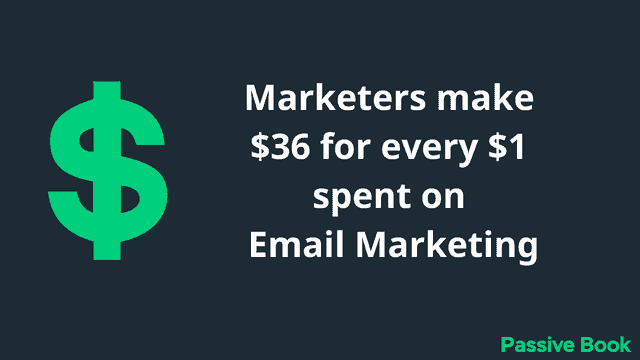
Email Marketing Tools
You need two software tools for successful email marketing. Here they are along with our recommendations:
Opt-in Form Software
To collect the email address of your subscribers you need to create opt-in forms and display them in the form of pop-ups and widgets on your website. Here are our recommendations:
Thrive Suite: We use Thrive Suite which is a collection of WordPress plugins that will help you create opt-in forms and landing pages. You can create any type of email opt-in form imaginable using their Thrive Leads plugin. You can create landing pages using their Thrive Architect plugin. Both plugins come as part of their Thrive Suite subscription.

Email Marketing Software
Email marketing software lets you create and send emails to your subscribers. It also lets you segment your subscribers using tags and automate the sending of emails based on user behavior. Your opt-in forms will integrate with your email marketing service. Here are our recommendations:
ActiveCampaign: It is a full-fledged email marketing software and CRM. If you want an email marketing tool with all the bells and whistles, then use ActiveCampaign. It has everything you will ever need, including eCommerce features.
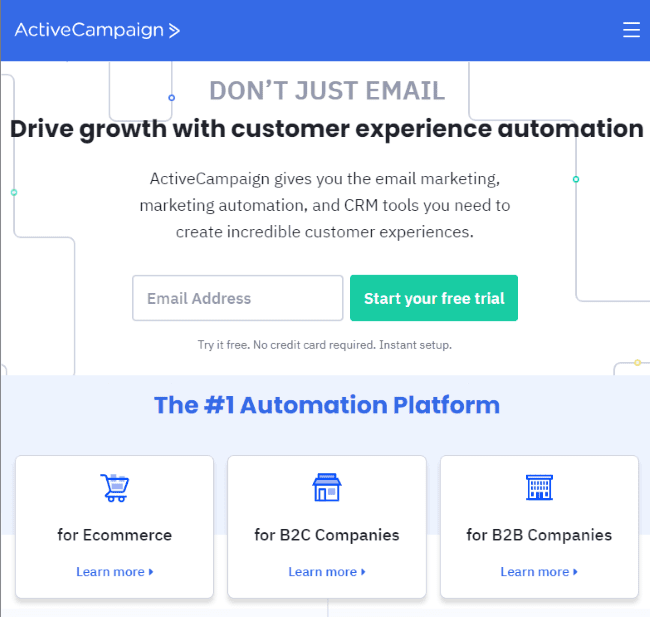
ConvertKit: It is an email marketing platform tailor-made for content creators. Content creators include bloggers, YouTubers, podcasters, authors, speakers, and coaches. If you are just starting, we recommend ConvertKit because it is free to get started. You can upgrade to their paid plan which has advanced features once your business grows.
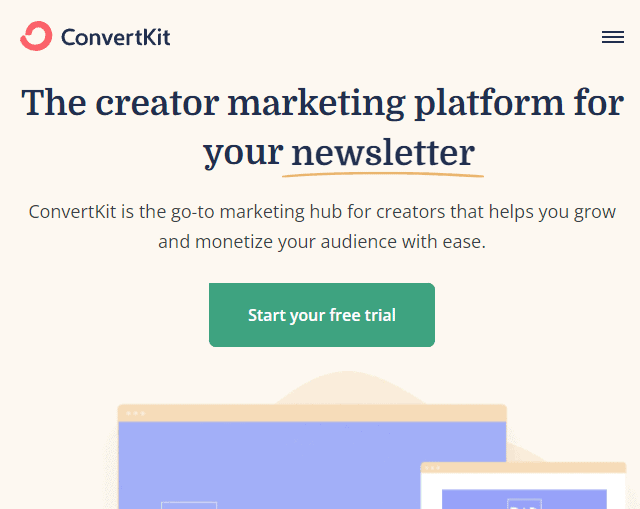
Once you create an account with ConvertKit or ActiveCampaign, integrate it with your opt-in forms. Both services integrate with most plugins and software on the market. If you use Thrive Leads, you can connect this from the API section.
Build Your Email List
Before you can start sending emails, you need to build your list of email subscribers. In this section, we will cover strategies to build your email marketing list from scratch.
Create Compelling Lead Magnets
Most people don’t give away their emails to random websites on the internet. So, if all you offer is a subscription to your email newsletter, then you will not get a lot of subscribers.
That is why you should create a lead magnet that you give away for free in return for the website visitor’s email.

Digital lead magnets are free to create. Here are the most popular lead magnets:
- Ebooks
- Quiz (Use Thrive Quiz Builder which is part of Thrive Suite)
- Templates
- Cheat Sheets
- Swipe Files
- Webinar
- Free Trial
- White Paper & Case Studies
- Coupons
- Free Quote or Consultation
The more valuable your lead magnet, the higher your conversion rate will be.
Create Opt-in Forms
Your opt-in form will be used to collect your site visitor’s email address.
It should also communicate the value of your lead magnet so that visitors are convinced to give their email in exchange for the lead magnet.
If you use WordPress, you can create your opt-in form using Thrive Leads.
Your opt-in form will have the following elements:
- Headline: Describe the lead magnet and the big benefit it provides.
- Description: Use bullet points to describe the additional benefits of your lead magnet.
- Visuals: Include an image of your lead magnet like a mockup of an e-book.
- Form: Include a form to collect the email address and optionally the name. The fewer fields a visitor has to fill, the higher the conversion rate will be.
- CTA Button: The button should be of a contrasting color so that it stands out on the page. Instead of using generic button texts like submit or subscribe, describe what the visitor will get (example: “Yes! Send me the blueprint”).
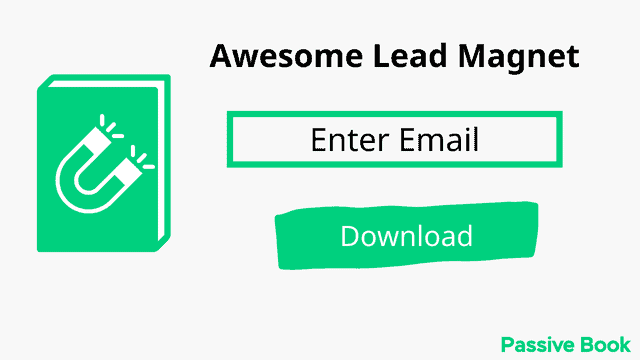
Once you create your opt-in form, embed it in the following places:
- Pop-up lightbox: Attention-grabbing pop-up appears that asks for the visitor’s email address.

- Inline Form: Displays the opt-in form inside your blog posts, header, or footer. Embed these forms in the About Page, Home Page, and Archive Pages.
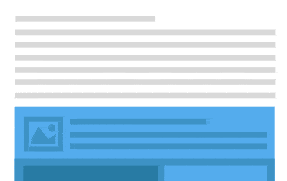
- Opt-in Widget: If you have a sidebar you can put the opt-in form as a sidebar widget
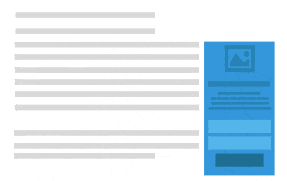
- Slide In: Opt-in form is less intrusive than a pop-up but it is still attention-grabbing.

- Scroll mat: Opt-in form fills the whole screen which is the best way to get your visitor’s full attention. The opt-in form fills the screen pushing the content down
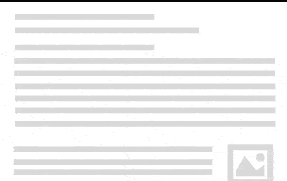
- Sticky ribbon: Opt-in form remains visible as the visitors scrolls down the screen.
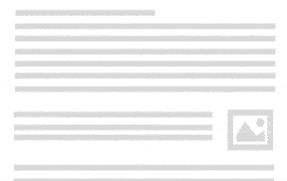
Thrive Leads which is part of Thrive Suite plugins will help you create your opt-in forms.
Create Squeeze Page
If you are driving traffic to your website through referrals or paid ads then you must have a squeeze page. The goal of the squeeze page is to get the visitor’s email address.
Here is an example of a squeeze page:
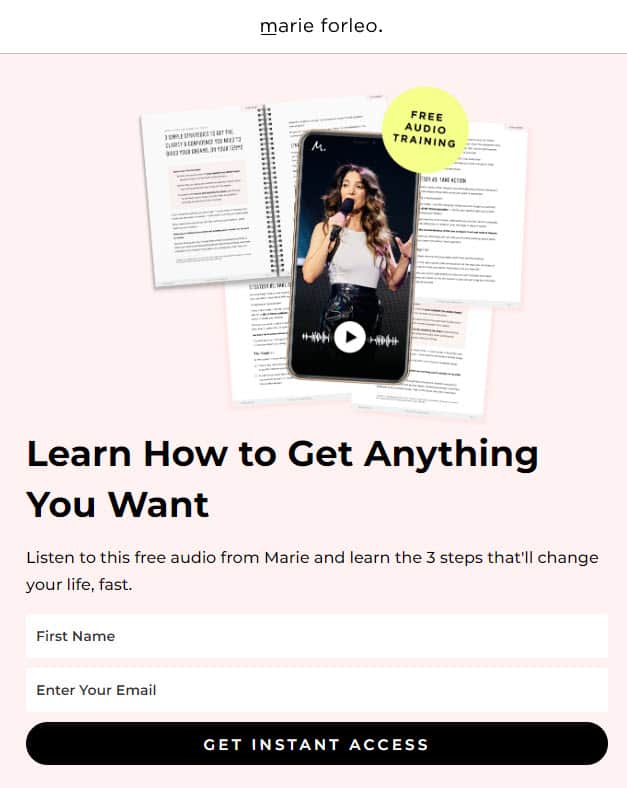
Typically the squeeze page does not have many options. The navigation is hidden and the footer is very minimal. The value of the lead magnet is communicated to convince the visitor to give you their email address.
Reducing distractions on the page increases the likelihood of the visitor signing up. You can tailor your squeeze page to different audiences and traffic.
If you use WordPress, you can use Thrive Suite to build your squeeze page. Thrive Architect in Thrive Suite will help you create your landing page. Thrive Leads which is also part of Thrive Suite plugins will help you create your opt-in forms.

Writing Email That Converts
Once you have your opt-in forms integrated with your email marketing service, it is time to send your email to your subscribers.
Your email content will have the following 5 parts which need to be optimized:
- From Name
- Subject Line
- Body Copy
- CTA
- P.S

We will look at the best practices to craft each of these seven elements so that you can craft your perfect email.
From Name
Your email “From Name” also known as “Sender Name” tells your subscribers who the email is from. Your “From Name” is even more important than the Subject and will determine whether your email gets opened or ignored.

If your subscribers trust and like you, your “from name” will encourage your recipients to open your email and engage with your content.
However, building trust takes time and you need to send a lot of relevant and consistent emails before they start trusting your brand. Every email you send will determine how your subscribers perceive your brand. This in turn will impact the open rate of your future emails.
Use your brand’s name in your from name (Example: Passive Book).
You can use a person’s name in the from name if the person is your brand or avatar that your subscribers recognize. For example, most of Tony Robbin’s subscribers won’t have heard of his company Robbins Research International. So if he uses his name instead of his company’s name, his subscribers are more likely to recognize and open his emails.
Using a person’s name in the from name makes the email more personal. But if you use a person’s name who is neither your brand nor your avatar, then your subscribers won’t recognize you and they won’t open your emails. To get the best of both worlds you can take a hybrid approach where you combine the person’s name with the brand name like below:
- Bob Smith – Acme Company
- Bob Smith from Acme Company
If you have multiple subscription categories, then you can use different from names to differentiate each other. For example:
- Brand name for transactional emails. Example: Acme Company
- Hybrid Name for content emails. Example: Bob from Acme Company
- Separate sender name for Support. Example: Acme Support
Irrespective of the approach you choose, the most important thing is to use a consistent from name in all your emails.
Subject Line
The greatest email is useless if it is not opened. Your email’s subject line will determine whether or not your subscribers open your email. So you must not leave it to chance.
There are two types of subject lines:
- Direct subject line
- Blind subject line
A direct subject line clearly communicates the content of the email whereas a blind subject line uses curiosity to make your subscriber open the email.

More people will open emails with blind subject lines (high open rate) but fewer people will click on the links in your email (low CTR). A direct subject line will have a lower open rate but a higher click-through rate (CTR).
If you overuse blind subject lines, it will increase the number of people unsubscribing from your list. If your subject line has nothing to do with the body of the email, then it will increase unsubscribes and spam complaints.
Make sure the subject line is less than 50 characters to avoid truncation. Shorter the subject line the better.
Here are a few subject line templates to get you started like a pro.
- Curiosity + Benefit: How Pizza will Skyrocket Your Credit Score
- Named Technique + Benefit: The “Brain Escalator” that Obliterates Debt
- Curiosity + Pain: This Unknown Pheromone Destroyer Maybe Hurting Your Dating
Use power words in subject lines. For example, use “skyrocket” instead of “improves”. Use “obliterates” instead of “removes”.
Body Copy
If the goal of writing the email subject is to get your email opened, the goal of your email body is to get your customer to click on the CTA link.
Unless your email is informational, the body of your email should sell the click of your CTA.
Your audience won’t have a lot of time. So drop readers right into the action. Don’t waste time, space, or words on any topic that will make your visitor’s eye glaze over. Skip everything the reader skips.
Your email should be between 250 to 400 words long.
If your emails are concise, then your subscribers are more likely to read them.
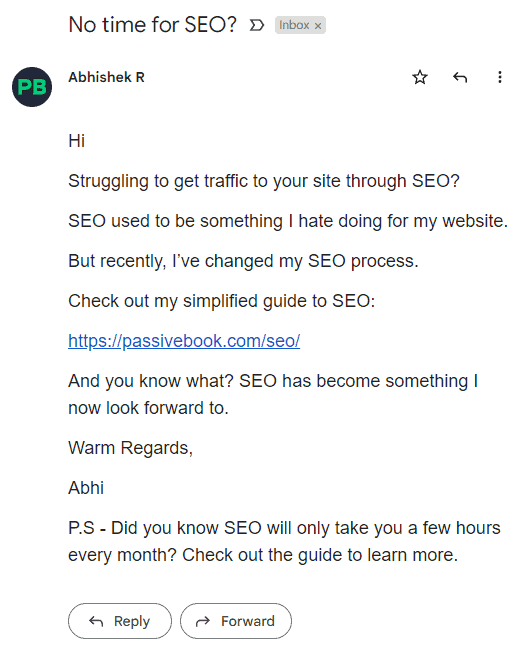
Open your email with an inclusion statement so that the reader feels that the email is relevant to them. For example:
- Everyone needs a car insurance
- Everyone has a credit score but do you know what it actually means?
- No matter what you do online, you can benefit from having a website.
Alternatively, you can also open with an exclusion statement to exclude people to whom the email doesn’t apply. For example:
- If you own a car newer than 2018 then this email is for you.
- Do you own a small business?
Always use short sentences, especially at the beginning of the email. It helps to get the reader moving down a slippery slope. As they read, their momentum to keep reading builds, and they get to the bottom where they can click a link.
Avoid commas in your email. It is better to separate your sentences with periods instead of commas because it keeps your sentences short.
If you build desire and curiosity in the subject line then don’t give them the answer in the body of your email. Answer it by having them click the link.
Include a personal story in the email. The story should contain the symptom that the person is facing in vivid detail. Mention the solution to that symptom casually and point them to click on the link to get the full solution.
If you are sending marketing emails trying to sell a product or service, include elements of scarcity and urgency. Limit your offer to a specific quantity and set a deadline to get the offer. Adding an animated timer inside the email creates scarcity that increases CTR.
CTA
The most common CTA is a link that directs visitors to your offer in marketing emails and your blog posts in the case of informational emails.
Other common CTAs include:
- Reply to this email
- Star or favorite this message
- Forward this email to a friend
- Share this email on social media
- Whitelist us with steps
You can have links in the following ways:
- Naked Links. Example: https://passivebook.com/seo/
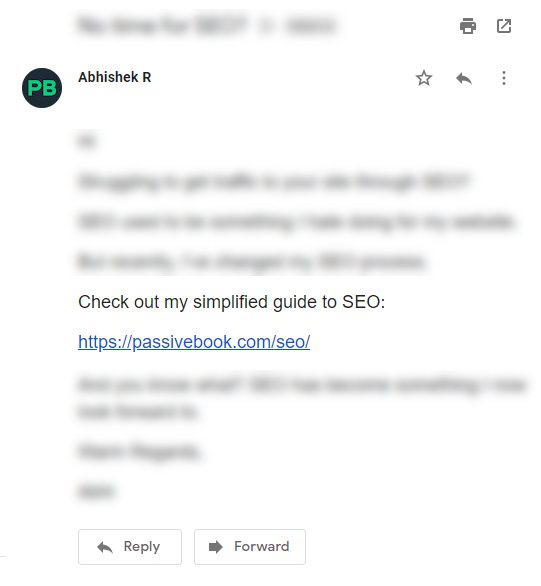
- Hyperlinked Anchor Text Link: Example: Click here
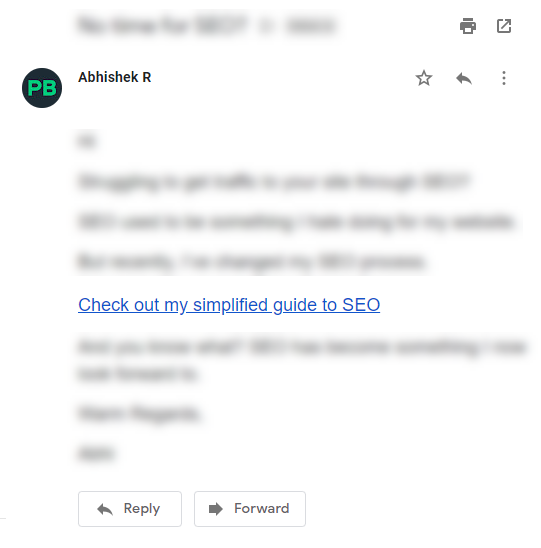
- CSS Buttons

- Images that are hyperlinked to the landing page.
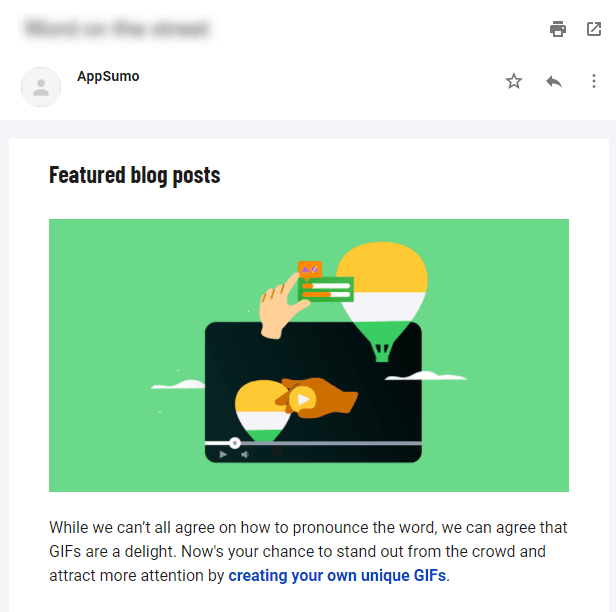
- Image of Video (with Play Button). The image of the video is hyperlinked to the landing page.
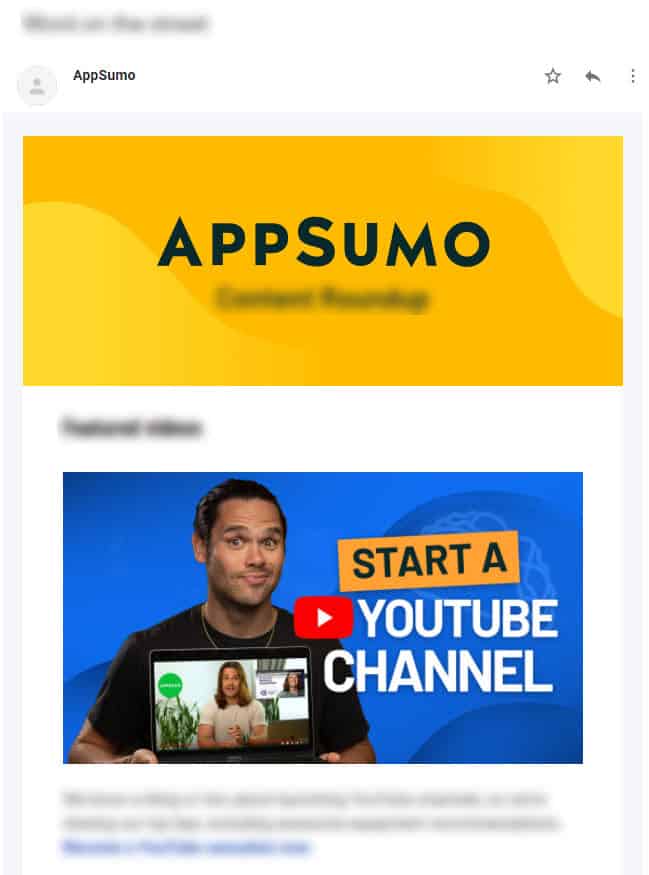
You should have at least one full URL for someone to click.
Keep links short so that they don’t go off the screen on mobile devices.
Make sure your links are above the fold and visible without scrolling.
Make the CTA stand out in the following ways.
- Underline CTA

- Click here =>
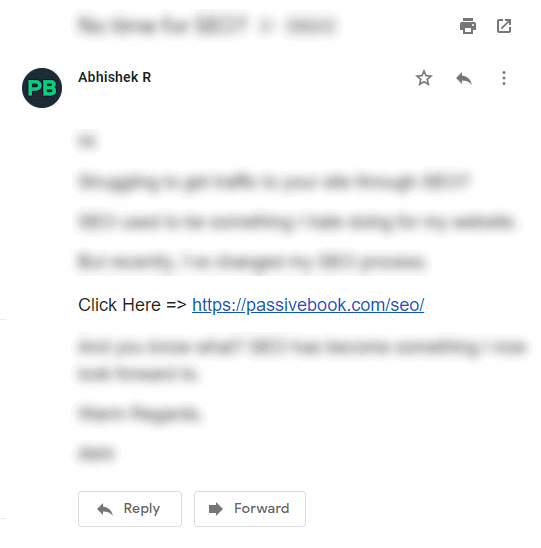
- Adding dotted lines above and below CTA. Example
– – – – – – –
Hyperlink
– – – – – – –
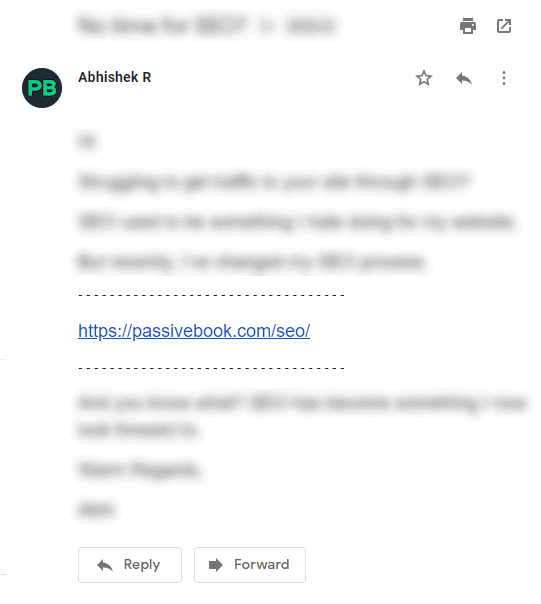
P.S.
Only use P.S. when it is truly compelling, explains an important point, or builds massive curiosity. You can also use it to reinforce the main contents of the email and add a CTA.

There are a few ways to use the P.S section.
Use your P.S to sell the click: For example, if you are asking them to read a list post your P.S can be “No 5 is so easy that you can do it in 10 minutes.
Break Objections: This will work for you even if [OBJECTION].
Testimonial: Provide short testimonials, success stories, or social proof in your emails.
Reinforce Urgency: For example, “Offer expires in 24 hours”.
CTA: Include a link to your CTA summarizing the contents of the email.
Plain Text vs HTML Emails
A plain text is an email that contains only texts. There are no images, stylized fonts, or hyperlinks. Here is an example of a plain-text email:

HTML emails on the other hand have a lot of images, colors, buttons, and multimedia in the form of images and gifs.

Plain text emails will look like an email from a friend whereas an HTML email will look like sales emails.
Use plain text emails, if you are a blogger, author, affiliate marketer or if you sell information products and services. If you have an eCommerce business then an HTML email will work better than a plain text email.
Plain text emails look good on all devices and even in email clients that don’t load images. They are also likely to land in the primary email inbox in Gmail.

HTML emails on the other hand are easier to track but will usually go to the Promotions email tab in Gmail.
Email Campaign Templates
If you feel overwhelmed to write emails then you are not alone. Instead of starting from scratch, email marketer uses proven templates to create their email marketing campaigns.
So if you are ready to craft high-converting emails that get opened and clicked then these templates are for you. There are four types of emails and we will cover how to create each one:
Welcome Email
The first email that you will send to any email subscriber is a welcome email. If your email subscriber opted in for a lead magnet then this is also the email where you send it to them.
Delve deeper into the underlying problems or desires that motivated them to sign up in the first place. You can do this by telling your or your brand’s story.
For your CTA, ask them to whitelist your email by replying to the email or manually guiding them through the steps to whitelist your email.
You can also ask them to follow you on your social media channels. Below is a free email template:
Template
Subject: [Gift Title] You Requested
Body:
Hi
This is [INTRODUCE YOURSELF].
You made the right choice by downloading our exclusive members-only [LEAD MAGNET NAME].
I am sending it to you in a separate email in a few mins (if you haven’t got it already).
This is a BIG deal.
In a single click, you have [WHAT IT SAYS ABOUT THEM].
We are just scratching the surface. In the next few days, [PREVIEW WHAT YOU WILL EMAIL AND WHEN YOU WILL EMAIL].
But before I send you all the good stuff, [WHITE LIST CTA OR SOCIAL MEDIA FOLLOW CTA].
Talk to you soon
Abhi
Example
Subject: The Webinar Script You Requested
Body
Hi
This is Abhi.
You made the right choice by downloading our exclusive members-only “Six Figure Webinar Script”.
I am sending it to you in a separate email in a few mins (if you haven’t got it already).
This is a BIG deal.
In a single click, you have unlocked the power of using webinars to take your business to six figures and beyond. This is the same script used by entrepreneurial rockstars like Russell Brunson and Jason Fladlien to generate over 100 million dollars in revenue.
The webinar script is just scratching the surface. In the next few days, I am going to show you how to implement the same strategies used by the very best in the industry. These secrets have helped entrepreneurs build multiple six-figure businesses from scratch.
But before I send you all the good stuff, I want to make sure that I am emailing a real person. Just reply to this email saying “Yes” and I will know my emails are reaching you.
Talk to you soon
Abhi
Content Email
The best way to promote a new blog post, podcast episode, or YouTube video is to email your list.
These emails are pretty straightforward to write. Just use the PASO formula. Keeping it concise will ensure that more people click through to read your blog post or watch your video.
Sending blog post emails trains your readers to click on the links in your emails. So when you send marketing emails they are likely to click the links there as well.
Some people put their entire blog post directly in the email. When you do this, you are missing out on the opportunity to train your readers to click on the links in your email.
Template
Subject: Use one of the following subject lines.
- Use a short version of your blog post title
- Take an element of your blog post and use it to create an email subject line that evokes curiosity
- Ask a question your blog post answers
Body:
Are you [CALL OUT THE PAIN OR PROBLEM]?
You aren’t alone [AGITATE THE PROBLEM BY GETTING INTO THE SPECIFIC DETAILS].
[OFFER YOUR UNIQUE SOLUTION]
Check out [SHORTEND BLOG POST TITLE] => [LINK CTA]
And you know what? [WHAT IS THE RESULT OR OUTCOME OF APPLYING THE SOLUTION].
Warm Regards,
[SIGN OFF]
Example
Subject: No time for SEO?
Body:
Struggling to get traffic to your site through SEO?
SEO used to be something I hate doing for my website.
But recently, I’ve changed my SEO process.
Check out my simplified guide to SEO => LINK
And you know what? SEO has become something I now look forward to.
Warm Regards,
Abhi
Sales Email
A sales email is an email that encourages your visitors to make a purchase. This can be your own products or affiliate products.
Including elements of scarcity and urgency will do wonders for your conversion rate.
It is important to remember that the primary aim of the sales email is to convince the email subscriber to click the link and go to the sales page. It is the job of the sales page to convince them to buy. Focus on selling the click more than selling the product.
Usually, you don’t send a sales email in isolation. You send a series of content educational emails that makes your customer interested in what your product has to offer before you ask for the purchase.
Template
Subject: [PRODUCT NAME] is Live Now!
Body:
Hi,
Just a quick email to let you know:
[PRODUCT NAME] is live right now!
The doors opened at [INSERT TIME] today.
Seats are filling faster than I expected.
You can find all of the information about the program on the registration page here:
>>>>> [INSERT LINK TO SALES PAGE]
You can join me starting TODAY for a guided mentorship to [INSERT SPECIFIC OUTCOME].
Just 90 days from now you can [INSERT SPECIFIC GOAL].
Plus, we have an incredible bonus…
[DESCRIBE THE BONUS].
Just a reminder, because [REASON FOR SCARCITY], space is limited to the first 200 students who register.
See You Inside,
[SIGN OFF]
Example
Subject: Greek God Muscle Program is Live Now!
Body:
Hi,
Just a quick email to let you know:
Greek God Muscle Program is live right now!
The doors opened at 9:00 AM today.
Seats are filling faster than I expected.
You can find all of the information about the program on the registration page here:
>>>>> [LINK TO SALES PAGE]
You can join me starting TODAY for a guided mentorship to build a chiseled Greek god physique.
Just 90 days from now you can increase strength, build muscle, eat for a lean physique and have fun with it.
Plus, we have an incredible bonus…
Dwayne Johnson (The Rock) is joining us for 12 weeks of personal coaching in the Greek God support group.
Just a reminder, because Dwayne is joining us, space is limited to the first 200 students who register.
See You Inside,
[SIGN OFF]
Ecommerce Email Templates
Use HTML emails instead of plain text emails if you have an eCommerce business.

Product Images
Add images of products with clear CTA buttons to add to cart or checkout.
Include products that are on sale or new arrivals in your store.
If you are emailing an existing customer, include items frequently purchased together in the email.
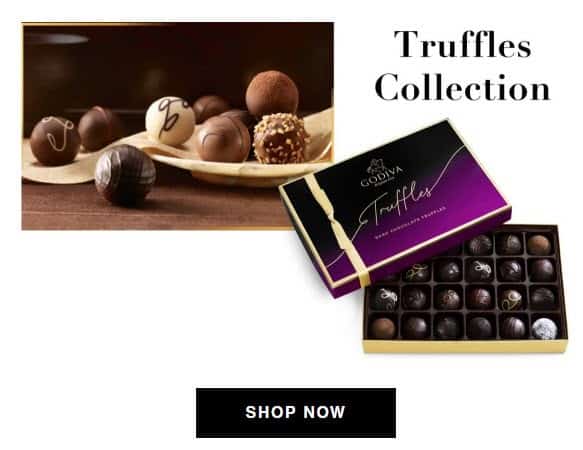
Discount Codes
Include discount codes to increase the likelihood of the customer shopping with you.

Social Media Profile Links
Include links to your social media pages.

ActiveCampaign has deep integrations with almost all eCommerce platforms allowing you to upsell and cross-sell products in your eCommerce store. They have a lot of eCommerce templates that are mobile responsive that you can customize and use in your brand.
Email Marketing Automation
When a new email subscriber joins your list, you don’t immediately ask them to spend money. Doing that would be like asking someone to marry you on your very first date. Instead, you want to build a relationship with your subscribers before you go for the sale. Email marketing automation will let you do this at scale for every new email subscriber that joins your list.
You can create an email drip campaign to nurture new subscribers. You can also automate sales sequences using email marketing automation.
Emails can be scheduled to be sent when specific conditions are met or can be timed to be sent at regular intervals. You can also send personalized emails based on the actions your subscribers take on your website.

Modern email marketing software like ActiveCampaign & ConvertKit lets you visually create these automation workflows using the automation builders. There are three steps to a typical email automation workflow:
- Segment Subscribers
- Set Automation Triggers
- Create an Email Drip Sequence
Segment Subscribers
For your email marketing automation to be effective, you need to first segment your subscribers. Email list segmentation is the process of grouping subscribers based on the information you know about them.
Why You Should Segment
When you segment your email list, it lets you personalize and drastically improves the effectiveness of email marketing. You can send personalized and relevant emails to segments you think will be most interested in your content. This will be better than blasting every email message to every subscriber in your list.
Email personalization in this form ensures that your subscribers always receive emails that are relevant to them. This keeps them highly engaged. Highly engaged subscribers will have high email open rates and click-through rates. They will also have a low unsubscribe rate.
Lists vs Tags
In the past autoresponders tackled email segmentation by using lists. If you had a fitness blog you would put subscribers who are interested in losing weight in one list and you would put subscribers who are interested in gaining muscle in another list. If you want to later segment customers by gender, it won’t be possible without splitting these lists further.
Modern autoresponders like ActiveCampaign & ConvertKit approach segmentation using tags instead of lists. You can add an unlimited number of tags to each subscriber. In the fitness blog example, you tag the gender, age, or any other information of the email subscriber as it becomes available.
How to Add Tags
The primary way to add tags to an email subscriber is when they opt-in for a lead magnet. It is really easy to do this if you build your signup forms using ThriveLeads.
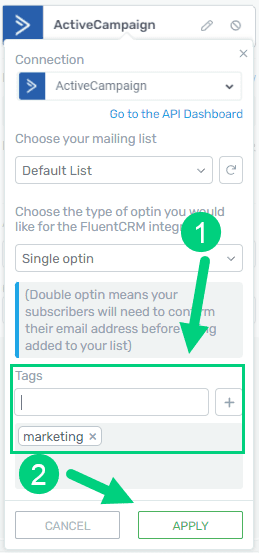
You can also add tags when a product is purchased by integrating your email marketing software with your e-commerce platform.
You can add tags based on the pages visited by your subscribers by embedding your email marketing software’s tracking pixel on your website.
Ways to Segment Your List
Here are the most common and useful ways to segment your subscribers:
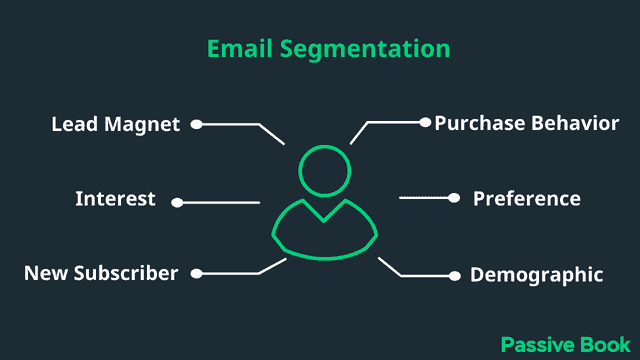
Lead Magnet: The lead magnet is the primary way to segment your subscribers. You can send targeted emails based on the topic of the lead magnet they downloaded. Saving the information of how they got into your list in the first place will also help you identify their interests.
New Subscribers: When an email subscriber joins your list, add the new subscriber tag and send them a series of emails to nurture them. Once they finish the nurture sequence, you can remove the new subscriber tag.
Interests: Your target audience might have different interests. A fitness blog may have subscribers interested in losing weight or gaining muscle. Use interests as one of the tags to segment your subscribers.
Purchase Behavior: Segment customers based on the products they purchased. Use these segments to upsell or cross-sell additional products.
Preference: Segment subscribers based on their preference. Some customers may want to be updated when you publish new blog posts. Others may be interested in only receiving promotional discounts or information regarding a sale.
Demographic: Segment customers based on their age, gender, location, job title, and other demographic information if it is relevant to your business. Gender for example is useful for a fitness website but is not very relevant for personal finance.
Add Automation Triggers
Automation triggers are conditions that automatically fire an automation workflow. You can have multiple triggers so your automation can start in multiple ways.
Here are the different types of automation triggers you can set:
- Form submitted (Opted in for Lead Magnet)
- Tag Added
- Tag Removed
- Subscribes to a list
- Unsubscribes from a list
- Opens/Reads email
- Clicks Link in an email
- Web Page Visited

Create Drip Email Campaigns
Once you have segmented your subscribers and set up triggers, you can start creating drip email campaigns. An automated email drip sequence is designed to deliver several emails to a subscriber over a specific period. The email subscriber triggers the email sequence by completing an event or action. The email series is sent out at a predetermined interval.
The quickest way to get started with drip email campaigns is to use automation recipes in ActiveCampaign or automation templates in ConvertKit. You will find fill-in-the-blank templates that you can quickly populate and deploy in your email marketing software.
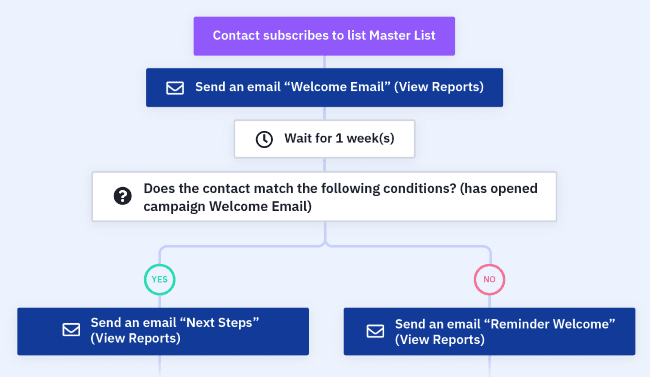
Here are the most widely used drip email campaigns:
Welcome & Nurture Campaign: Build and nurture your relationship with your new subscribers so that you indoctrinate them into your brand. Welcome Email Sequence usually has 4-6 emails spaced 1-2 days apart.
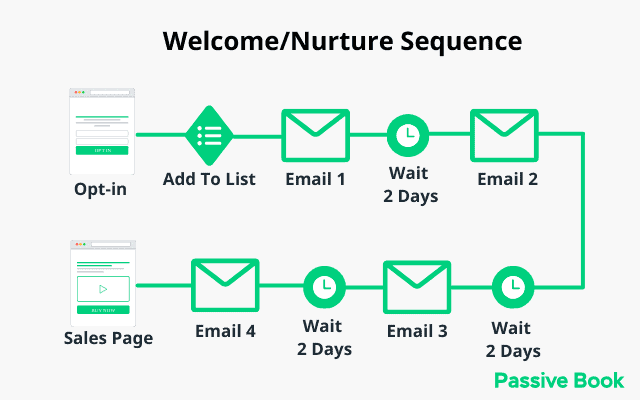
Onboard Sequence: You provide the information that your customers need to get started using your product or to buy from you. Both welcome and onboarding sequences should build brand awareness. It will take your subscribers from being aware of their problems to being aware of your products and what you can offer them.
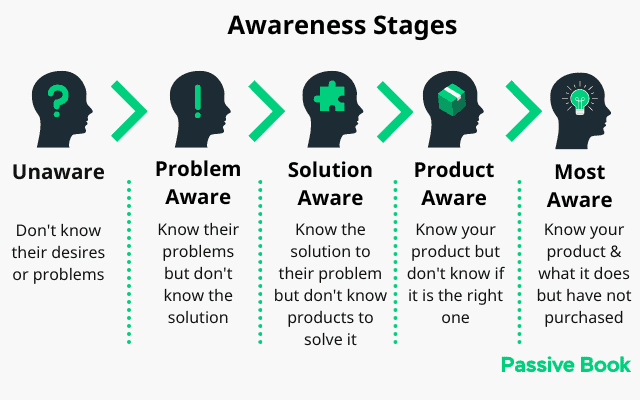
Product Launch Sequence: Launch your products to your subscribers in a seven to fourteen-day window. Send 3 educational emails that make the customer aware of the problem and potential solution. Follow it up with 4-5 sales emails that convince them to buy. Built-in elements of urgency and scarcity result in a high conversion rate.
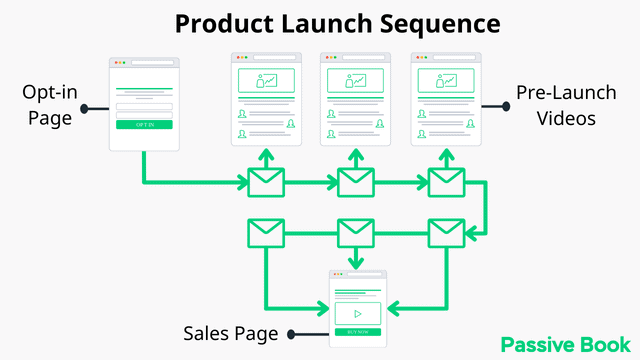
Upsell & Cross-Sell Sequence: Increase the average order value of your customer by selling additional products to your existing customers. It will help convert one-time buyers into repeat customers.
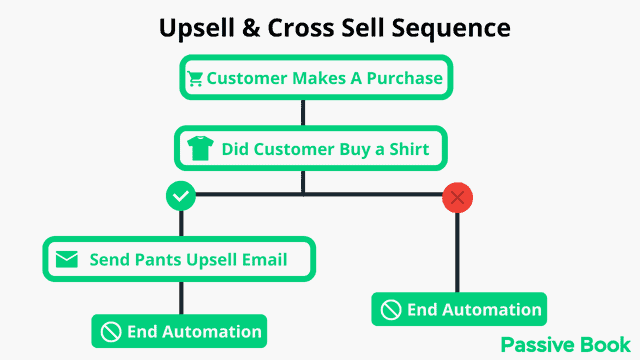
Webinar Sequence: Drive registration to your webinar and send webinar replay to non-attendees. Follow it up with a product launch sequence to drive sales.

Cart Abandonment Sequence: Send a series of three reminder emails to visitors who do not complete the purchase. The three emails are spaced 24 hours apart. Abandoned cart emails can help recover over 63% of the lost revenue.

Post Purchase & Feedback Sequence: Increase buyer satisfaction and ensure customer success using a post-purchase email sequence. Get a testimonial from your happy customers and feedback to improve your product from unhappy customers.

Promotional Sequence: Create promotional email sequences for sales, offers, and discounts. Usually used during events like Black Friday & Cyber Monday.
You can stack campaigns so the end of one campaign becomes the beginning of another email campaign. Your customers will automatically enter and leave the different funnels when you stack them this way.
Email Marketing Strategies
We will now cover a few advanced strategies that can take your email marketing efforts to the next level.
Avoid Spam Filters
If your emails end up in your subscriber’s spam folder then they will never be seen leave alone be opened.

To avoid the spam filter and make your email reach the inbox, ensure the following:
- Make sure all your subscribers have opted in. Don’t email anybody who has not opted-in to receive your emails.
- Consider using double opt-in to verify your emails.
- Make it easy for your subscribers to unsubscribe.
- If a customer unsubscribes or marks your email as spam, then don’t email them ever again. Your email marketing platform should have built-in capabilities to be able to do this.
- Encourage your subscribers to whitelist you by adding your email to their address book or by replying to your emails.
- Avoid words that trigger spam filters like “discount”, “buy” etc.
- Verify your sending domain by implementing DMARC and by setting up DKIM and SPF.
- Ensure the email sent is from a good IP address that has not been used by spammers in the past.
- Use MailGenius (free) to check your emails before you send them to your subscribers. It will help improve the deliverability rate.
Stay compliant with local rules and regulations including CAN-SPAM and GDPR by ensuring you never buy email lists, double opt-in subscribers and make it easy for people to unsubscribe.
What is the difference between single opt-in vs double opt-in?
In single opt-in, subscribers are added to your email list immediately after they click the subscribe button.
In double opt-in, subscribers must click on a link sent to their inbox and confirm their email address, before they get added to your email list.
Practice List Hygiene
Email Service Providers (ESP) like Gmail and Outlook will start sending your emails to spam or the secondary inbox when a lot of your subscribers don’t open your emails. This is where email list hygiene comes in.
Email list hygiene is the process of removing subscribers and email addresses that haven’t opened any of your emails in the last 120 days. It will greatly improve your email deliverability.

Modern email marketing responders will help you automate list hygiene by automatically removing non-openers from your list of subscribers.
Before you get rid of inactive subscribers, consider sending them a re-engagement campaign and ask them if they still want to stay subscribed.
Optimize Send Time
The time and day you send your emails out will impact your open rate and conversion rate.
Most studies on send time have shown that the best days to email are on the weekdays especially Tuesday, Wednesday, and Thursday.

The best time to email for the highest open rate is between 9 AM and 5 PM. But the click-through rate peaks during the night because most people check their emails before they sleep.
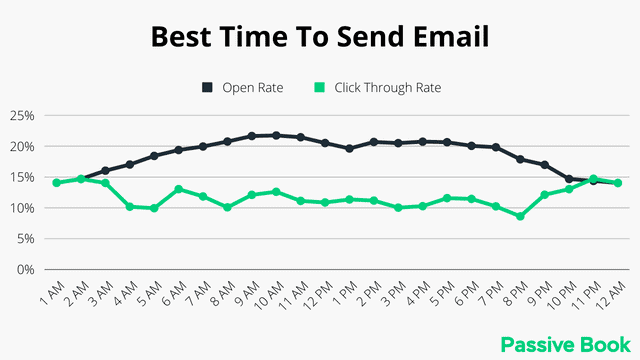
The best day and time to email will vary by industry. The only way to find out the best day and time to send emails to your target audience is to perform A/B tests.
Optimize for Mobile Devices
67% of all emails are opened on a mobile device. So you should ensure that your email looks good and is optimized for mobile devices.
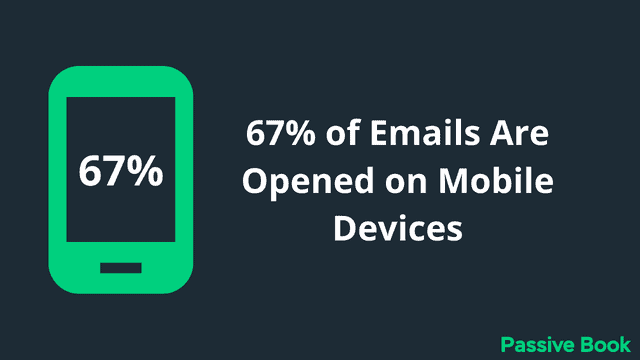
If you are using a template with a lot of images, you must ensure that it is mobile responsive and the images load easily in every email client.
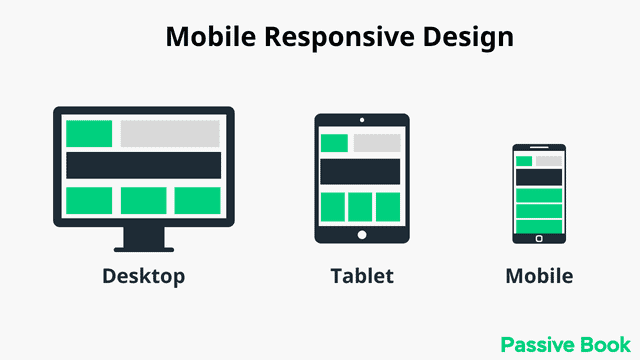
Android sometimes turns off displaying images by default so make sure your emails look good without them.
Send a test email to your email address and view it on your mobile phone before you email your entire target audience.
Split Test Email Campaigns
Email split testing (also known as the A/B test) is the process of testing two versions of the same email against each other to improve the performance of your email marketing campaign.
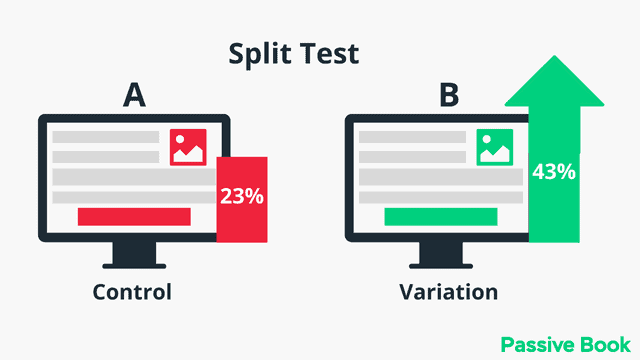
For example, to improve the open rate of your email, you can split-test two email subject line variations. Half your email subscribers will receive the first subject line and the other half will receive the second subject line.
A typical split test will try to improve the following email metrics:
- Deliverability
- Open Rate
- Click-Through Rate
- Conversion Rate
You can test variations of the following in an email split test:
- Email Subject Lines
- Email Copy
- CTA
- Design & Layout
Ensure that you change only one element for any split test. If you want to speed up a split test, you test up to four variations at a time.
ActiveCampaign & ConvertKit has a built-in feature to do an A/B test of your emails and automatically select the winner. Constantly split-test your email drip campaigns to tweak and improve them.
Email Analytics
You can use email analytics to understand how your emails performed and use that information to tweak your campaigns.
Here are the most important metrics to track and improve in email marketing:
Bounce Rate
The email bounce rate is the percentage of email subscribers who did not receive your email because their email address was not valid.
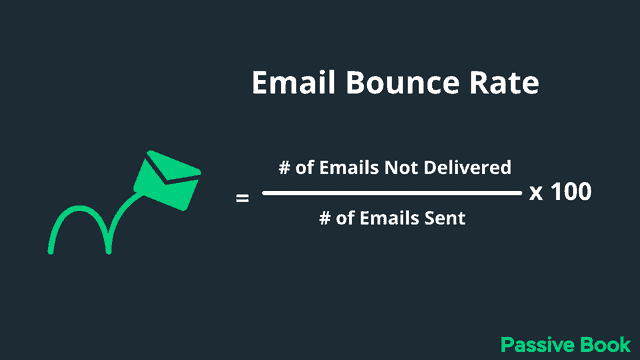
To reduce your bounce rate, email only the people who have opted in. Consider using double opt-in and make sure your practice good list hygiene.
Delivery Rate
The delivery rate is the percentage of subscribers who received your email.
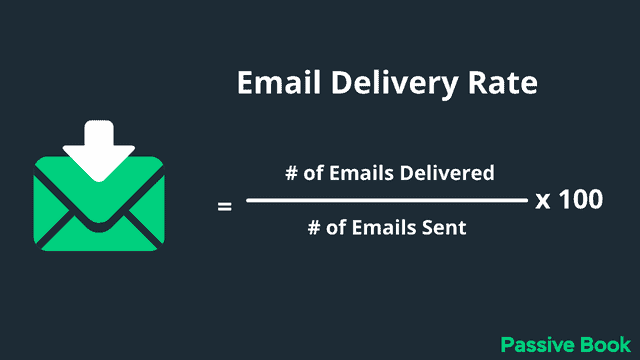
If your email delivery rate is low, then make sure your emails are avoiding spam filters. Use the free tool called MailGenius to check if your emails trigger spam filters.
Open Rate
The open rate is the percentage of subscribers who opened your email.
If your open rate is low, it usually means you have a lot of unengaged subscribers or your subject line is not appealing enough.

If your customers are unengaged, you need to be providing more valuable content and managing expectations.
Click-Through Rate (CTR)
Click-through rate (CTR) is the percentage of subscribers who clicked on at least one link in your email.

If your CTR is low, then it means your body copy is not doing a good job of selling the click. You can also have low CTR if your subject is misleading and is not congruent with the body copy.
Conversion Rate
The conversion rate is the percentage of subscribers who converted.
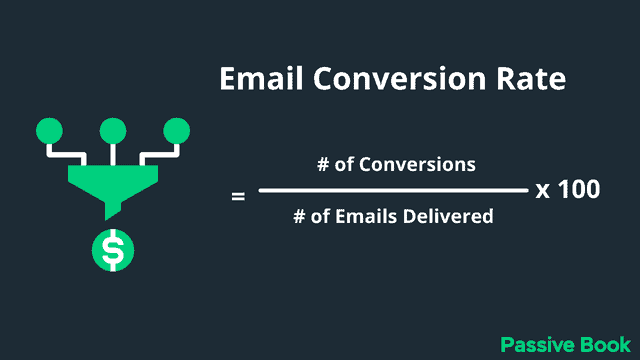
Conversion can be purchasing your product or registering for a webinar.
If your conversion rate is low, then it means your landing page copy needs to be improved.
Unsubscribe Rate
The unsubscribe rate is the percentage of subscribers who opted out after receiving your email campaign.
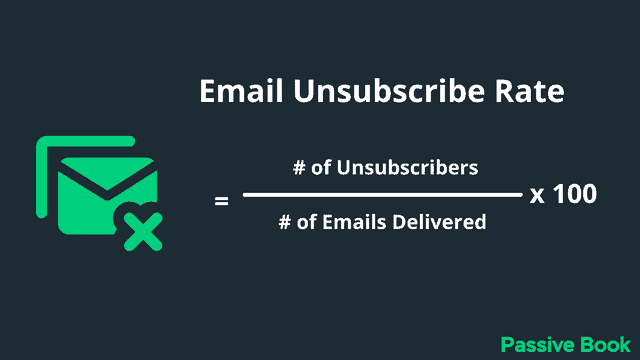
If your unsubscribe rate is high then your email is not aligned with the expectations of your subscribers. You should work on providing more value and managing expectations.
Complaint Rate
The complaint rate is the percentage of subscribers who marked your email as spam after receiving your email campaign.
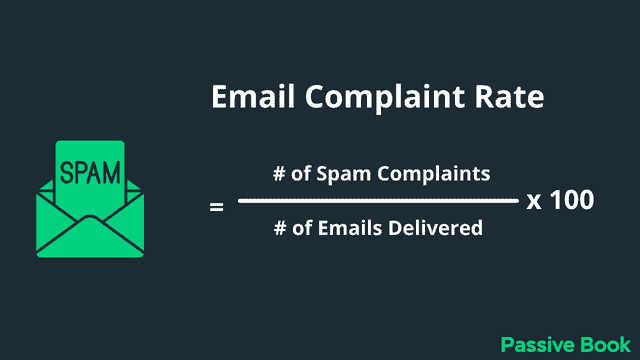
If your complaint rate is high it is either because you are emailing people who did not opt in or because your email is pissing your subscribers off. The spam complaint rate can also be high if your subscribers have forgotten you because you haven’t emailed them in a long time.
Email Marketing Examples
Let us now look at successful email marketing from four different industries.
James Clear (Author)
James Clear built a list of over one million subscribers by writing & content marketing. The audience gave him the platform to launch his books Atomic Habits which quickly became a New York Times bestseller. He writes simple bite-sized emails that are easy to read. He occasionally plugs a promotion for his book or course in his email newsletter which drives traffic to his paid products.

Brian Dean (Blogger)
Brian Dean is the man behind the popular SEO blog Backlinko. He captures his visitor’s emails primarily through lead magnets known as content upgrades.
The product launches that he does to his email list generate between 6 to 7 figures in revenue for his business. These product launches are a series of simple plain text emails that direct his visitors to his course’s landing page.
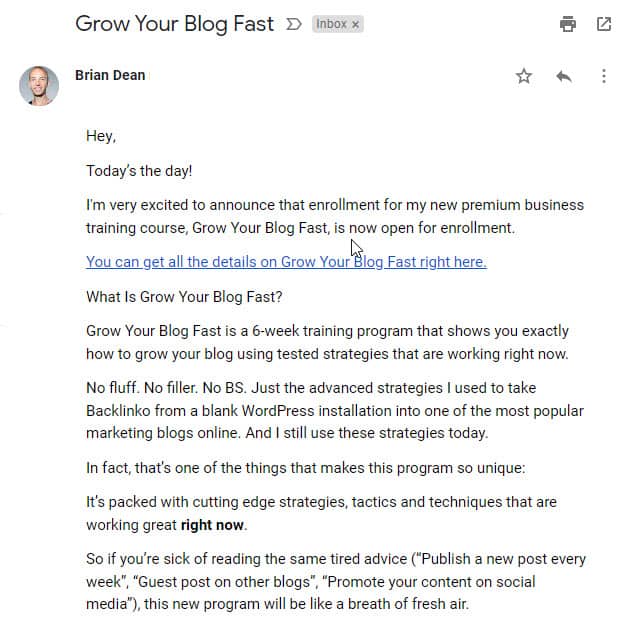
Godiva (Ecommerce)
Godiva is a good example of an HTML email being used by e-commerce:
- Discounts are offered to entice potential customers to purchase.
- Product images from different categories are prominently displayed
- Clear CTA buttons that direct the visitor to the shop page
- Link to social media platforms

Grammarly (SaaS)
The spelling and grammar correction app, Grammarly leverages email marketing to help its customers get the most out of their software. They also gently nudge their customer to purchase their premium offer with a clear CTA button.
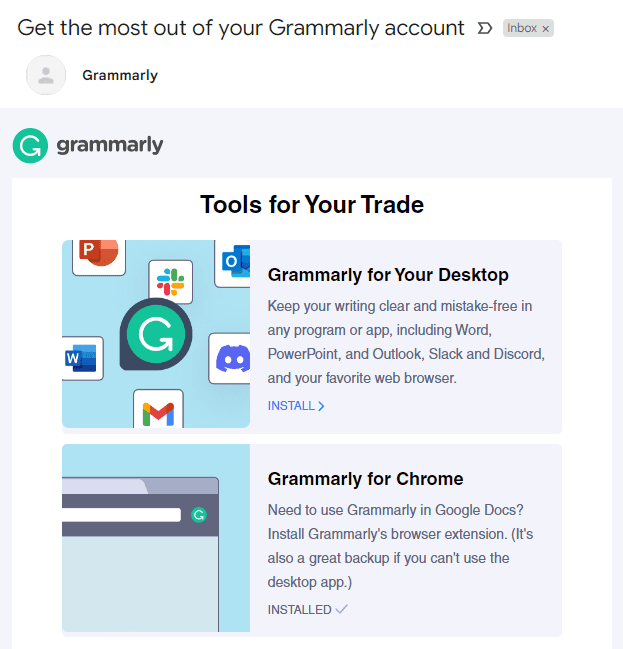
Frequently Asked Questions
Here are some frequently asked questions about email marketing.
Which is the Best Email Marketing Software?
ActiveCampaign is the best email marketing software overall because it is packed with every feature you will ever need while still having one of the lowest costs. It also integrates with almost every marketing software or tool you can use in your business.
How often should you email?
You can reach out to your newer subscribers more often than your older subscribers. Email your older subscribers in a schedule that works for you.
Too many emails can lead to people unsubscribing. But you should email at least once a week so that your subscribers don’t become unengaged. Also, have at least one day gap between your emails so that your subscriber’s inbox does not get flooded with your emails. At the bare minimum you should email every month.
What Next?
If you have not started using email marketing then you are leaving a lot of money on the table.
If you have a question or if something is stopping you from getting started, post it in the comments and we will answer them.
Email marketing need not be complicated and will bring you a huge return on your investment when done right.
Which email marketing strategy are you going to use from this complete guide?
Are you going to create a lead magnet? Or are you going to start by creating an email drip campaign?
Let me know in the comments below.
Share this post with your friends & followers:
